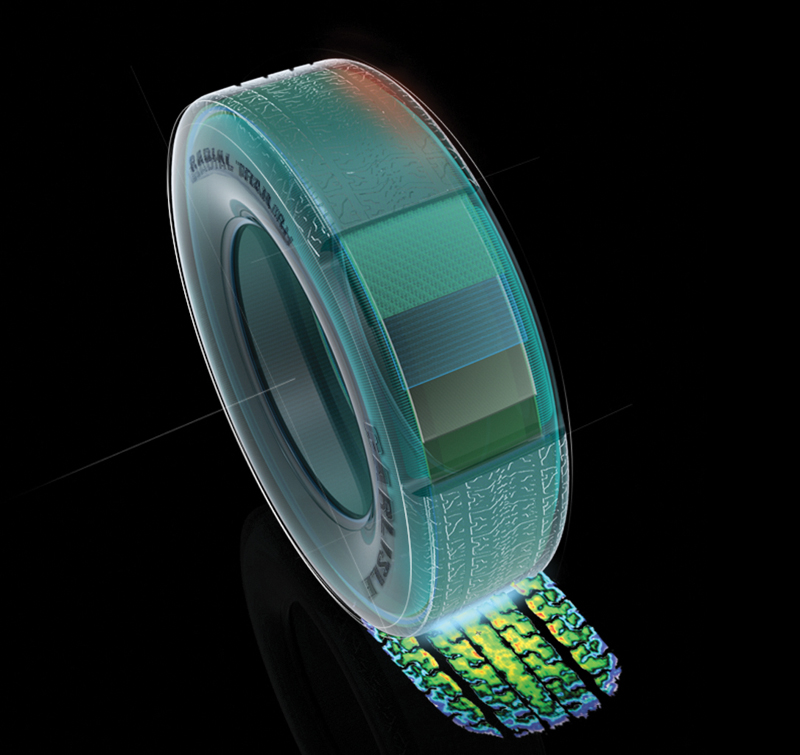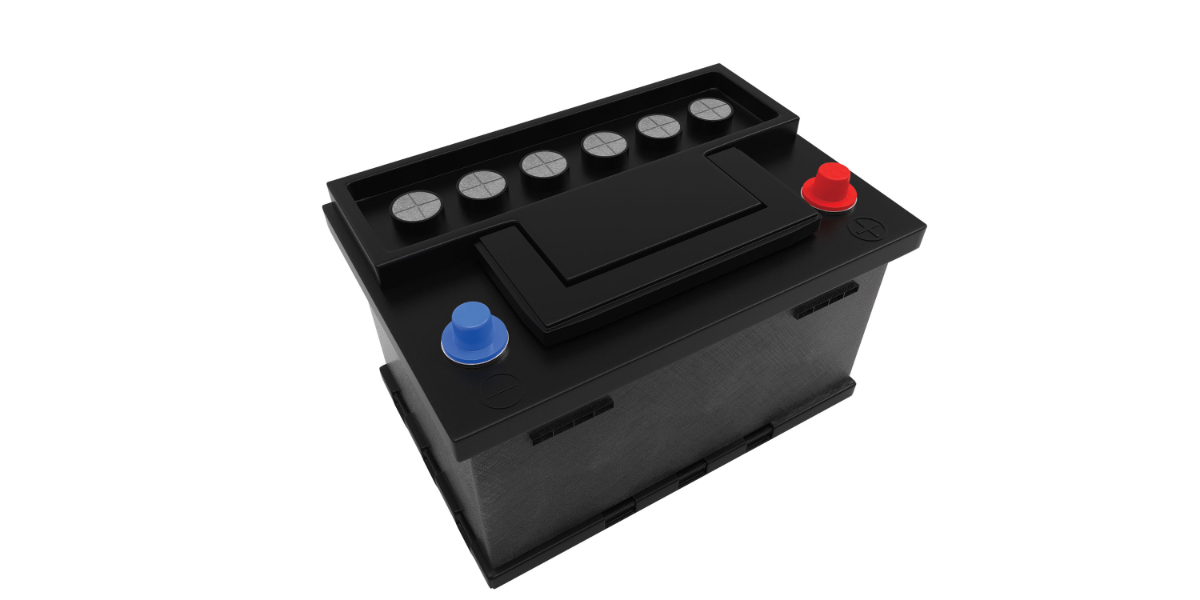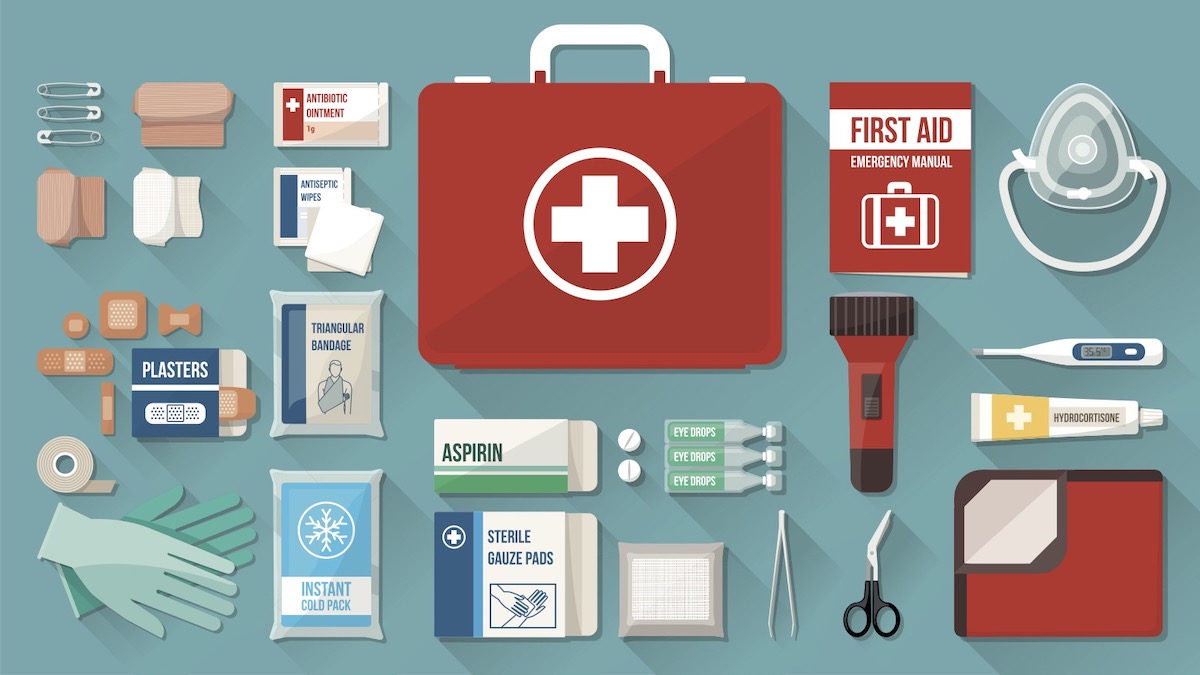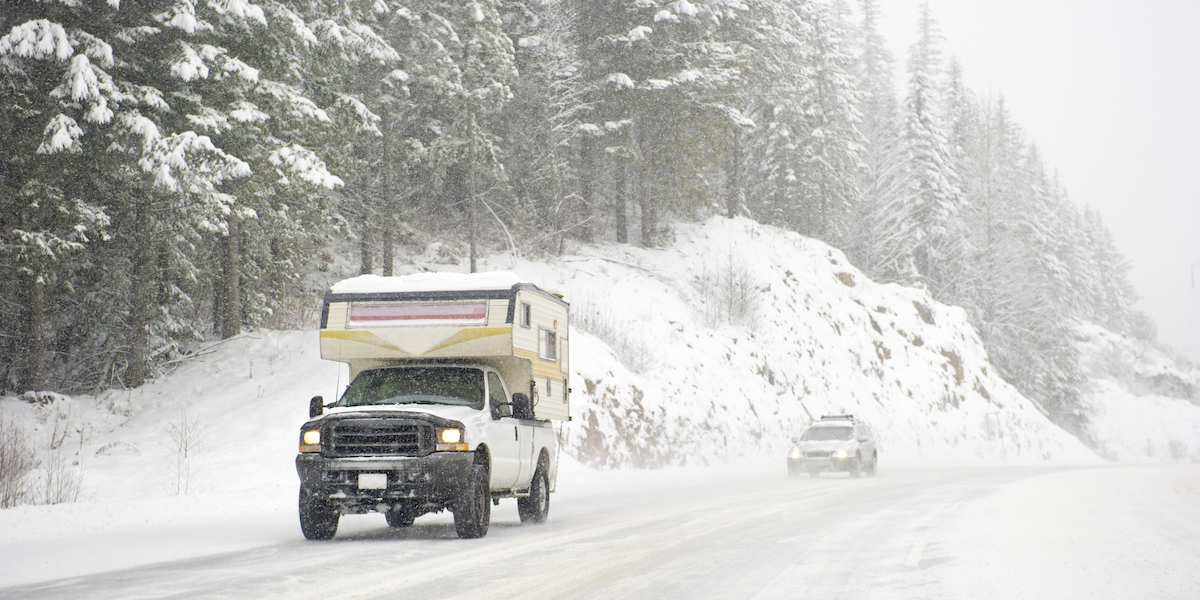A Guide to Trailer Tires
Image Caption:
It’s not that unusual for owners of trailers to be thinking about tires. If you’re going to take towing safety seriously, you must give attention to these seemingly simple circles that provide your connection to the ground. It is as true for a trailer as it is for a tow vehicle. In fact, trailer tires are expected to put up with heavier loads, unusual turning abuse and inconsistent use. Selecting and maintaining trailer tires is an important aspect of the trailer life.

ST VS. LT
What is a trailer tire and how is it different from a light truck tire? Most trailer tires are specifically designated “ST” because as Special Trailer tires they are designed to handle stresses that are not common to “LT” or light truck tires.
You may have noticed that tight turns with your tandem- and triple-axle trailer put tremendous side loads on the tires. You can see it in the sidewalls or hear it coming from the contact patch. ST tires are designed to handle these side stresses; LTs usually are not.
ST tires are also specifically designed to resist movement that can cause trailer sway, which can be a tremendous advantage in trailer handling.
According to some ST tire manufacturers, the polyester cords used in ST tires are bigger than those found in a comparable P-metric or LT tire. For the most part, the size of these components is directly relative to the tire’s size and load rating regardless of the tire’s type, be it ST, LT or P-metric, and the components are correctly sized for a given tire.
ST tire compounds contain chemicals to resist weather and ozone cracking, which are conditions that trailer tires often endure during long-term storage. Characteristics
of these tire compounds also address the inconsistent duty cycles of trailer tires that go from extended inactivity to hard use.
Use of non-ST tires should only be done at the recommendation of the trailer manufacturer. There is no shortage of “experts” online who will swear that ST tires are a conspiracy and that LT tires are better for trailering, but problems with ST trailer tires are likely to stem from not properly maintaining tires, running them underinflated, speeding or a plethora of other trailer-tire mishandlings. We are going to go with the recommendations of the trailer makers and the tire industry.
With that said, some RVers have experienced seemingly unexplained failures with ST tires on appropriately set-up trailers, especially off-brand tires imported from overseas and sold in this country at bargain prices. Some of those people solve their problems by switching to comparably sized LT tires with the same or higher maximum load ratings. This is one option to keep in mind in the event you’re experiencing ongoing trouble with ST tires.
Bias-ply or Radial?
Bias-ply tires are designed with cords that are oriented at about 60 degrees from the direction of travel and are layered to crisscross over each other. This design makes bias-ply tires more rugged, which is a good fit for some rougher terrain and some off-roading. The cord pattern creates a greater resistance to sidewall punctures.
Radial tires feature plies that run perpendicular to the direction of travel. Radial tires deliver a smooth ride, better tread wear and retain less heat, which also extends tire life.
Since bias-ply and radial tires have dramatically different construction and handling characteristics, you should never mix the two types of tires. Always choose one or the other for your trailer. Bias-ply tires are rarely found on new trailers these days.
Air Up Your Trailer Tires to Avoid a Blow Out
Tires should be inflated to the pressure recommended for the trailer. Most trailer-tire blowouts are due to an underinflated tire, which creates excessive heat, damages the tire liner and causes the tire sidewall to rupture. If a trailer tire has a maximum pressure and not a maximum load at a minimum pressure printed on the sidewall, it should not be exceeded, but trailer tires like all tires should be inflated based on load, which will not necessarily require the maximum or minimum pressure printed on the sidewall.
Tire pressure should be checked when the tires are cold, before use and not when they have been directly exposed to sunlight. Visually inspecting trailer tires before use is important, but also use a tire-pressure gauge to read the actual pressure. The stiffer sidewalls of ST tires can often hide the potentially underinflated tire.
Goodyear recommends that a tire that has been run even 20 percent underinflated be dismounted and inspected by a trained professional. Tires that have been run underinflated shouldn’t be aired up without a full inspection. A tire puncture causing a slow leak can go undetected if you’re not diligent in checking tire pressures. Also, tires naturally lose a pound or two of inflation pressure per month.
Trailers with multiple axles require the tires to be identical in size to properly manage the weight of the trailer for their expected load capacity. Maxxis recommends consulting with your trailer manufacturer when considering larger tires as an option for your trailer. The trailer manufacturer can give you specific information on load capacities and tire sizes. In general, you can replace the same size tire with a higher load capacity, but never go to a lower load rating for your trailer.
While tire-care products can make tires shine and look great, don’t use those that contain alcohol or petroleum distillates. They can cause tires to dry out, become weather cracked and wear more quickly.
Tire Lifespan
It seems counterintuitive, but trailer tires that are regularly used can have a better lifespan than those that are kept in storage. During use, tires release compound lubricants that can help extend tire life. A tire that is not in use can degrade from ultraviolet (UV) exposure.
The life expectancy of a trailer tire varies from manufacturer to manufacturer; however, most are between 3 to 8 years, regardless of mileage. Carlisle Tire estimates that one-third of a tire’s strength is gone in approximately 3 years. Carlisle says to consider replacement after 3 years, regardless of tread depth remaining; and at 5 years definitely replace. That’s just one company’s recommendation.
Other tire manufacturers generally suggest a tire be replaced at 7- or 8-year intervals. Frequent and detailed inspection can help you gain perspective on the tire’s ongoing condition as its projected lifespan nears its end.
Tips for Storage
If the trailer is fitted with bias-ply tires and will be stored for an extended period (say, six months), it should be put on blocks to avoid flat spotting the tires. For shorter-duration storage, place each tire on a waterproof surface — such as a plastic kitchen cutting board, some type of thick rubber mat or a piece of sheetmetal on a piece of plywood — to help isolate the tires from groundwater that can soak up into the tire and accelerate tire degradation.
Weather cracking occurs naturally in trailer tires from exposure to heat and sunlight so they should be protected from ozone, UV and heat-related exposure during storage. Storing the trailer in a cool, dark garage will prolong tire life. A less-costly option is to use tire covers available at RV accessory retailers, as these covers shield the tires from sunlight and other storage abuses.
Slow Down to Save Your Trailer Tires
Speed kills trailer tires. Most ST tires are designed to be run at a maximum of 65 mph. Higher speeds cause the buildup of heat, which seriously impacts the life and wear of the
trailer tires.
Trailer Tire Alignment
Trailer alignment can be the cause of tire wear and tear. Finding a shop that is equipped to check and fix alignment issues could mean better trailer-tire life.
Alignment items to be checked include camber, toe-in, and ensuring that the axles are parallel to each other and perpendicular to the hitch pivot point. A well-equipped shop can adjust all of these characteristics to help you achieve long and reliable tire life.
Trailer Tire Balance
It’s not a commonly known practice, but balancing trailer tires can help extend tire life as well as the lifespan of wheel bearings and other axle components. An out-of-balance trailer tire is a bad idea just as an out-of-balance tire is a bad idea on a tow vehicle. There’s no one in a trailer to feel the shaking and vibration from out-of-balance tires, but that doesn’t mean the shaking isn’t happening or it’s not affecting the trailer’s hardware. Trailer tire balancing is cheap insurance.
Read the Manufacturing Date
Tire makers are required to display the four-digit manufacturing date of the tire at the end of the DOT number on the tire sidewall. Check this number even when you’re buying new tires to make sure they were recently manufactured and not already missing a part of their useful life sitting on a shelf. The first two digits are the week and the second two are the year of manufacture. So, if the number reads “1912,” they were manufactured in the 19th week of 2012.
Keeping your trailer tires up to date not only avoids delays on your trips but keeps your family and fellow travelers safer. Save your creativity for your camp cooking and not for selecting trailer tires. Replace with the right tires as recommended by the trailer’s manufacturer or by qualified engineers in the tire industry. Following are popular trailer-tire options.





